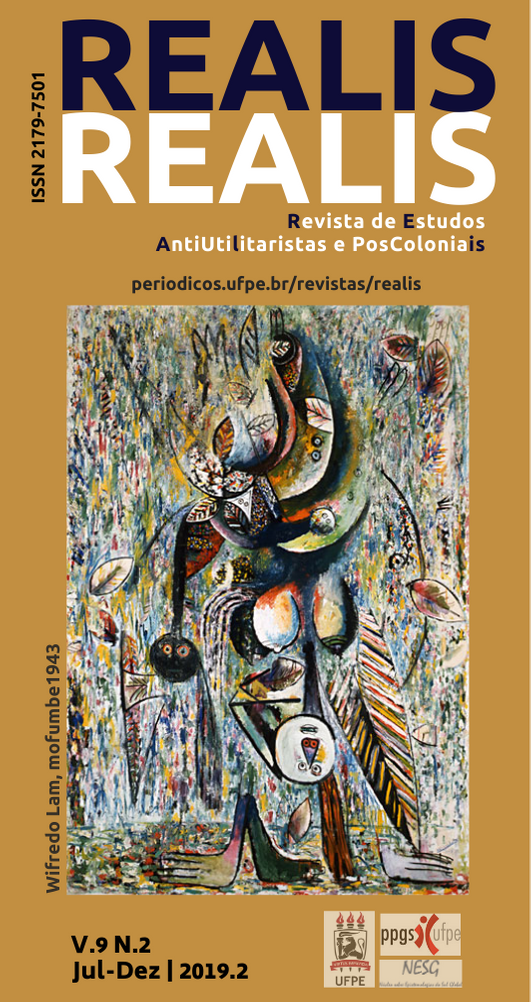The (lack of) knowledge of the “other“. The stereotyped image of mexico held by the czech university graduates and its transformations
DOI:
https://doi.org/10.51359/2179-7501.2019.244112Keywords:
stereotype, Mexico, Czech Republic, contact theory, discourse analysisAbstract
Using the tool of the discourse analysis, thispaper studies the perception of the cultural otherness of Mexico heldby an important sector of the Czech society: the young university graduates, in order to document and explain the way the stereotyped image, developed in the midst of a relative lack of communication with the exogroup (Mexico), starts transforming thanksto the direct intercultural contact. The conclusion is that the first-hand contact leads to a transition where the socially shared stereotype turns into a subjective narrative via the processes of abstraction, complexity increase and appropiation of the exougroup ́s cultural data.References
BAR-TAL, Daniel. (1994). Formación y cambios de los estereotipos étnicos y nacionales. Un modelo integrado. Psicología Política, Nº 9, 21-49.
BORGERSON, Janet y SCHROEDER, Jonathan. (2002). Ethical issues of global marketing: avoiding bad faith in visual representation. European Journal of Marketing, No. 36, 5/6, pp. 570-594.
ČSÚ. (2015). Cizinci podle kategorií pobytu, pohlaví a občanství k 31. 12. 2014. En https://www.czso.cz/csu/cizinci/cizinci-s-pobytem-nad-12-mesicu
ČSÚ. (2014). Úroveň vzdělání obyvatelstva podle výsledků sčítání lidu. En https://www.czso.cz/documents/10180/20536250/17023214.pdf/7545a15a-8565-458b-b4e3-e8bf43255b12?version=1.1
GARCÍA SANTIAGO, Ángel y ZUBIETA IRÚN, Juan Carlos. (2006). Los estereotipos nacionales de las poblaciones de los países del MERCOSUR y España. España: Universidad de Cantabria.
GRIM, Patrick; SELINGER, Evan; BRAYNEN, William; ROSENBERGER, Robert; AU, Randy; LOUIE, Nancy and CONNOLLY, John. (2005). Reducing Prejudice: A Spatialized Game-Theoretic Model for the Contact Hypothesis. Public Affairs Quarterly, Vol. 19, Nº 2, 95-125.
MERSKIN, Debra. (2010). The S-Word: Discourse, stereotypes, and the American Indian woman. The Howard Journal of Communications, Nº 21, 345-366.
OPATRNÝ, Josef. (2011). Las relaciones checo-mexicanas. Praga: Universidad Carolina/Editorial Karolinum.
PETTIGREW, Thomas y MEERTENS, R. W. (1995). Subtle and blatant prejudice in Western Europe. European Journal of Social Psychology, Vol. 25, Nº 1, 57-75.
PETTIGREW, Thomas y TROPP, Linda. (2006). A Meta-Analytic Test of Intergroup Contact Theory. Journal of Personality and Social Psychology, vol. 90, Nº 5, 751-783.
RODRÍGUEZ, María Soledad; SABUCEDO, José Manuel y ARCE, Constantino. (1991). Estereotipos regionales y nacionales: del conocimiento individual a la sociedad pensante. Aprendizaje, Revista de Psicología Social, Nº 6, Vol. 1, 7-21.
SAYAGO, Sebastián. (2014). El análisis del discurso como técnica de investigación cualitativa y cuantitativa en las ciencias sociales. Cinta Moebio, Nº 49, 1-10.
VAN DIJK, Teun. (1984). Prejudice in discourse. An analysis of ethnic prejudice in cognition and conversation. John Benjamins Publishing Company.
WODAK, Ruth y MITTEN, Richard. (1993). On the discourse of racism and prejudice. Folia Lingüística, Vol. 27, Nº 3-4, 191-216.
WRIGHT, Stephen; ARON, Arthur; MCLAUGHLIN, Tracy y TROPP, Stacy. (1997). The extended contact effect: Knowledge of cross-group friendships and prejudice. Journal of Personality and Social Psychology, Vol. 73. Nº 1, 73-90.
Downloads
Published
Issue
Section
License
A revista se reserva o direito de efetuar, nos originais, alterações de ordem normativa, ortográfica e gramatical, com o intuito de manter o padrão culto da língua, respeitando, porém, o estilo dos autores;
As opiniões emitidas pelos autores são de sua exclusiva responsabilidade
Os direitos autores para artigos publicadoss nesta são dos autores, com direitos de primeira publicação para a REALIS. Todos o contéudo da revista, com exceção de caos especificamente declarados, é licenciado sob licença Creative Commons CC Atribuição Não Comercial 4.0 Internacional. Devido à política de acesso aberto da Revista, todos os artigos são gratuitos e livres para uso, com atribuição apropriada, para fins educacionais e não-comerciais.


